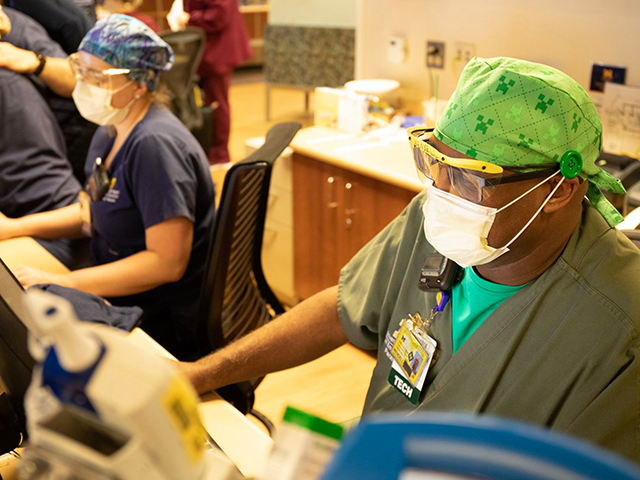A “family planning fellow” at the University of Michigan has created a series of videos showing health care workers how to interact with biological men and women who are living as their opposite sex.
“Transgender and gender diverse people face numerous barriers to health care, including violence and discrimination while attempting to obtain care,” Crissman, a family planning fellow, said in a blog published on the University’s website. “I came into medicine with a passion for issues of health and gender, reproductive justice and caring for the lesbian, gay, bisexual, transgender, queer community.”
“As a learner, the University of Michigan Medicine School embraced my individual interests and showed commitment to fostering my growth and development in those areas,” Crissman said.
The blog said, in part:
After collecting data from 600 front-line Michigan Medicine employees, 75% said that they received no formal education in caring for transgender individuals and one in three had experienced a situation at Michigan Medicine where they felt unprepared for a transgender patient or visitor.
With the support of a mini grant, Crissman created an introductory video, as well as five job-specific training videos designed specifically for certain job groups who frequently interact with patients. The job groups included providers, RN-MA-tech-allied health professionals, security guest service specialists, call center staff and registration clerks.
In an amazing development for a school that allegedly teaches scientific based medicine, these videos promote the redefinition of biological sex based on feelings:
It is important to understand the difference between sex and gender, sex refers to one’s reproductive organs native hormones and chromosomes, while gender identity refers to one’s internal sense of gender. A person’s basic sense of being a man or boy, a woman or girl, or another gender, gender identity can be expressed by how individuals present themselves socially, including clothing, physical characteristics, speech and mannerisms, all people, whether they are transgender or cisgender, meaning not transgender have a gender identity and expression. Transgender is a term for individuals whose gender identity differs from the gender identity typically associated with their sex assigned at birth.
There are many identities that fall under the umbrella of transgender transgender men trans men or trans masculine referred to people who are assigned female sex at birth, but identify as men or masculine transgender women, trans women or trans feminine refer to people who were assigned male sex at birth but identify as women or feminine. Other individuals may identify as genderqueer, a gender, gender fluid to spirited by gender, or another identity that does not fit neatly into the categories of men or women.
The video series is also of not in that when defining transgender individuals it notes that a transgender person can have that status regardless of what treatment of lack thereof they undergo:
Transgender people may undergo any one of a number of gender affirming medical interventions including hormonal therapies like estrogen, testosterone or hormone blockers and surgical treatment to change body contours, or genitalia. However, it is important to note that one does not have to undergo any medical or surgical treatment to be transgender.
One video shows a doctor interacting with a man dressed up like a woman:
“Hi Mr. Lee. I’m Dr. Chrisman, nice to meet you. How can I help you today, sir.”
“Well, I was hoping that you could take a look at a rash, which is recently developed on my right breast.”
“Of course, sir, I’d be happy to take a look.”
“Dr. Chrisman, I would appreciate it if you don’t refer to me as Mr. or he. My name is Mauve. You can call me Mauve. You can call me Miss Lee, but I don’t use male pronouns.
“I am so sorry,” the doctor says. “I do apologize if I was using the wrong name or pronouns.”
The video said providers should start interaction with patients by asking them what they would like to be called.
The videos establishes protocol on how all individuals at the university who interact with “transgender” men and women, from security and guest services to nurses and other medical staff.
“This education is vital because it hasn’t been taught in the health professions schools until recently,” Ruti Volk, who leads the Patient Education and Health Literacy Program at the college said in the blog.
“Many of us who consider ourselves allies of the LGBTQ+ community still do not know the appropriate terminology for addressing and relating to transgender people and make mistakes despite our good intentions,” Volk said.
Follow Penny Starr on Twitter or send news tips to pstarr@breitbart.com.

COMMENTS
Please let us know if you're having issues with commenting.